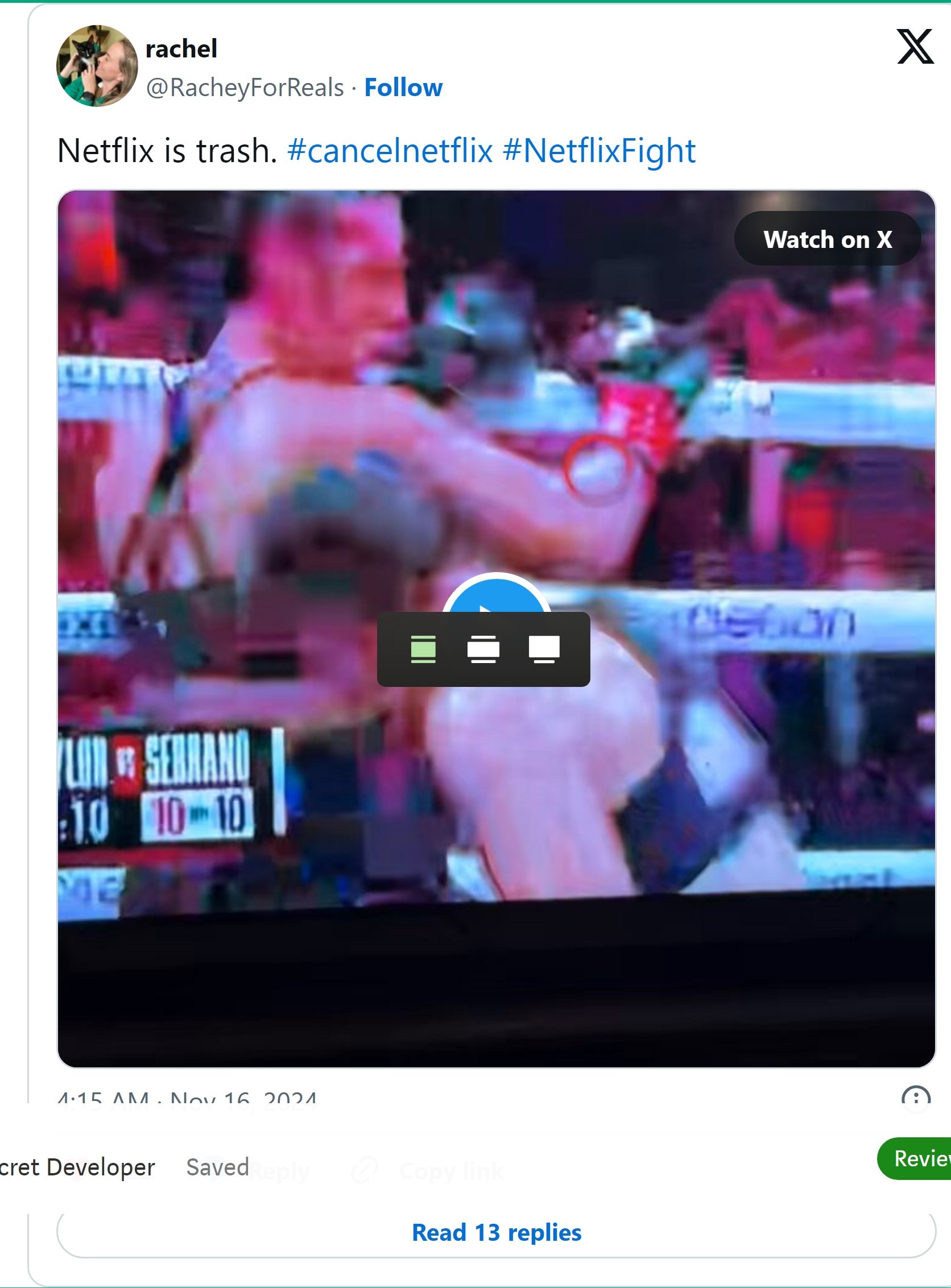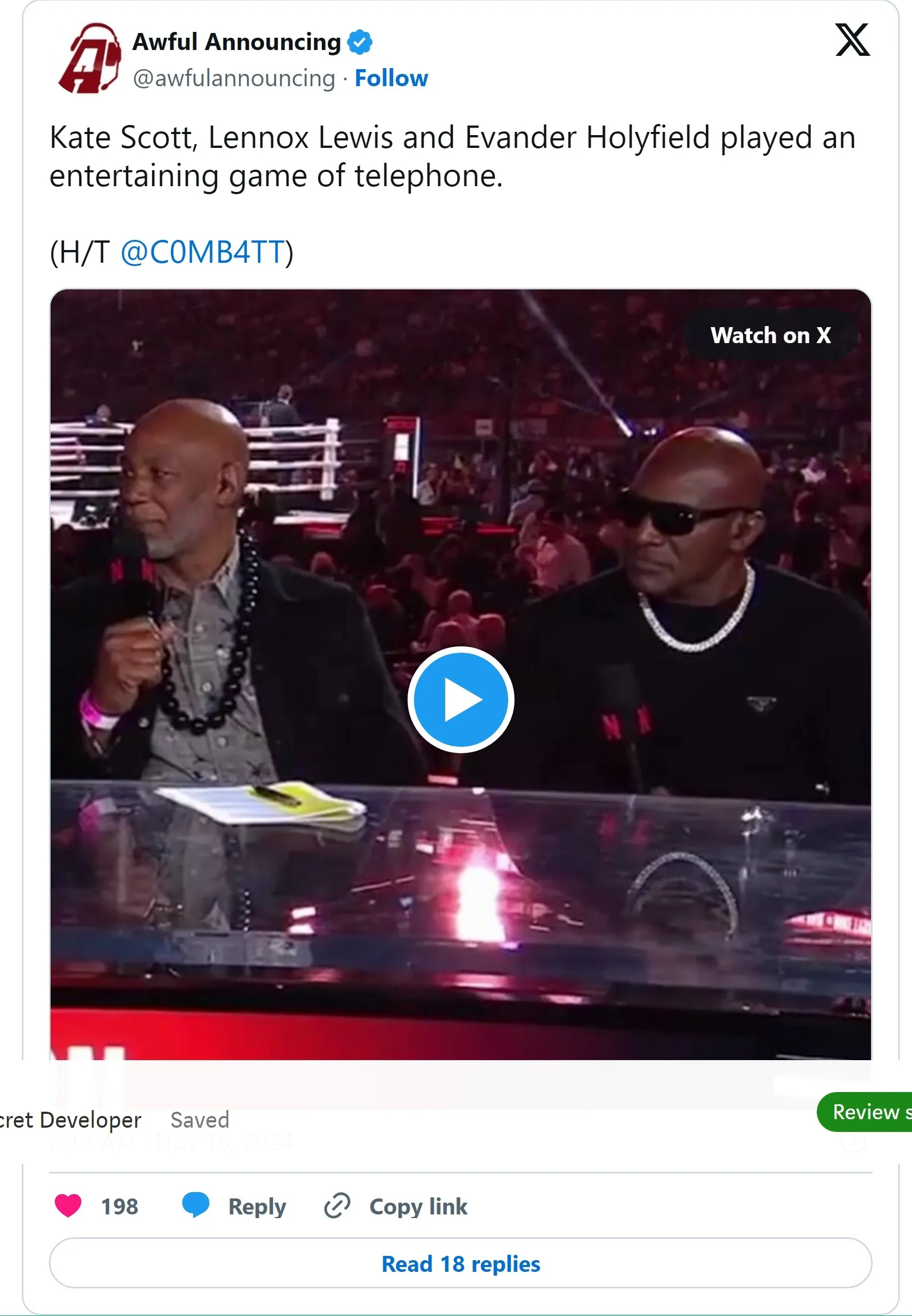Netflix is Trash⬇️
When 58-year-old convicted rapist Mike Tyson took on YouTuber Jake Paul, the most worrying thing wasn’t that the latter needed to pull their punches to avoid hurting the old man.
The problem is that Netflix couldn’t handle live streaming, despite all of their FAANG money and power.
Let’s break down the issues and what this means for techies everywhere.
The Knockout Blow
Netflix is pivoting to hosting a series of live events, as they see tentpole broadcast live TB coming back with a vengeance.
It seems that the 60 million viewership of the bout was simply too much. Buffering? Check. The app crashing? That happened. “Retrying in 1 second”? That’s not great.
Why Did Netflix Fail?
Underestimating Demand
The magnitude of this event dwarfed Netflix’s usual live streams. Their systems likely buckled under the unprecedented load.
Global Scalability Challenges
With 60 million+ households (or 120 million viewers, according to Paul’s team), it’s clear Netflix’s streaming pipeline wasn’t up to the task.
Live Event Complexity
Unlike static video-on-demand, live streams require ultra-low latency, adaptive bitrates, and consistent high-quality performance. A single dropped packet at the wrong moment can spiral into chaos.
Content Delivery Network (CDN) Issues
Netflix’s Open Connect is great for on-demand content but may not be optimized for the unique requirements of live streaming at this scale.
Lessons for Software Developers
Load Testing Is King
Products can make or break our reputation as software developers. Test them for destruction. Stress test and chaos engineer to the core.
Think about what you are doing before you deploy. Think about the consequences of your actions. If Netflix had doubled-down on simulations of extreme demand, perhaps this debacle could’ve been avoided.
Monitor, Monitor, Monitor
Even if your service seems stable, constant monitoring is critical. Real-time alerts and dashboards can help spot bottlenecks before users do.
If the user sees a problem then it might already be too late. The public shaming might be in full flow.
Your First Impression Matters
Netflix’s live boxing debut will be remembered for its failures. Think of every launch like a first date, and you need to impress.
Plan for Scalability, Even If It Hurts
It’s easy to cut corners for an MVP, and you might have pressure to do things you think aren’t right. Netflix on the other hand don’t have this excuse.
Recovery for Netflix
Netflix have already put the PR operation into gear. They’ve apologised for the issues.
Yes from a technology point of view, they need to do better. When systems malfunction, they need to do better. Even a simple message explaining what’s wrong (and how you’re fixing it) can prevent social media uproars, but the message needs to go out quickly.
Did they underestimate the Jake Paul factor? Well, you should always be ready to scale even if you don’t “expect” it from a technology point of view. What about adopting more robust multi-CDN strategies to handle live traffic better? It must be worth looking into
As developers, let’s hope Netflix learns from this. Live streaming isn’t for the faint of heart, but with preparation and a dash of humility, it’s possible to bounce back. After all, even Tyson had his comebacks.
For the broadcast mess? No such apologies have been put into place.
Conclusion
This is a tech issue. Netflix needs to work on fixing this stuff, especially if they pursue more live sports in the future. If they get it right, there is a pot of gold at the end of the rainbow for them.



